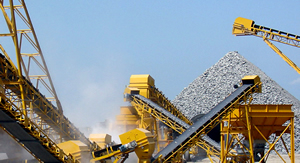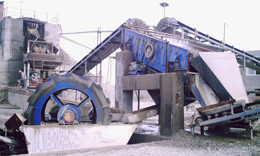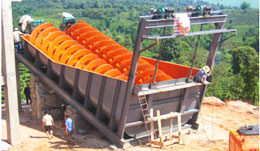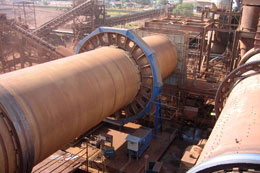-
Sand Making Crusher
- PCL-Vertical Shaft Impact Crusher
- SBM Hydraulic VSI Crusher
- VSI5X Series Impact Crusher
Dolomite beneficiation
Dolomite beneficiation process

SBM uses separate beneficiation methods for different size fractions of ore. While beneficiation methods (except the patented heavy media separation plant) are similar to those used at other phosphate operations, the degree to which the specific methods are tailored to material size is unique to Four Corners. Beneficiation occurs in three separate plants: (1) the washing plant, (2) the heavy media separation plant, and (3) the flotation plant. Operations in each of these plants are discussed in the following sections
Washing Plant

The washer plant provides for size separation of the matrix ore into clays, fine product, dolomite product, and oversized debris. A flow diagram for the washing plant is presented in Figure 5. In the washing plant, there are two washer circuits (the North and South washers). Each circuit can receive matrix ore from two of IMC's four draglines. The two draglines that feed a washer circuit alternate between mining matrix ore and removing topsoil and overburden such that the circuit is only receiving ore from one dragline at any given time.
Heavy Media Separation Plant
In the heavy media separation plant, an unspecified volume of water is initially added to the dolomite product, which is then passed through two stages of hydraulic screening. The dolomite product is separated into: (1) greater than 5 mesh material, which is classified as waste , (2) less than 5 mesh to greater than 16 mesh material, which goes to heavy media separation, and (3) residual less than 16 mesh material, which goes to the flotation plant. The wastewater from the screening stages is recycled within the plant.
Flotation Plant
The less than 16 mesh material from the washer plant is pumped to two "unsized" feed bins (100-foot diameter and 45-foot height). These bins feed the flotation plant, where the material is initially separated into three size fractions; fine, coarse, and spiral. In the first separation stage, "fine" material (less than 35 to greater than 150 mesh) is hydraulically separated (by density). The remaining material (less than 16 and greater than 35 mesh) is then passed over Derrick screens to separate the "spiral" (less than 16 and greater than 24 mesh) and "coarse" (less than 24 and greater than 35 mesh) fractions.
- Limestone Crusher
- Barite Crusher
- Granite Crusher
- Kaolinite Crusher
- Calcite Crushing
- Tombarthite Crusher Mill
- Bentonite Grinding Plant
- Basalt Ore Crusher
- Lignite Crusher Mill
- Silica Ore Crusher
- Tin Ore Mine
- Lead and Zinc Ore Crusher
- Ochre Crusher Mill
- Garnet Crusher
- Mica Crusher
- Asbestos Crusher
- Manganese Ore Crusher
- Talc Crusher Mill
- Feldspar Crusher
- Iron Ores Crusher
- Dolomite Crusher
- Quartz Crusher
- Gypsum Crusher
- Calcium Carbonate Grinding
- About Us
- |
- Service
- |
- News & Events
- |
- Contact Us
- |
- Resources
- |
- Showroom
Aggregate Crusher
Artificial Sand Making
Ballast Crushing Machine
Basalt Stone Crusher
Barite Mine Process
Beneficiation Plant
Bentonite Crusher
Bentonite Milling
Calcium Carbonate Crusher
Calcium Carbonate Grinding
Cement Grinding
Concrete Crusher
Coal Crusher
Copper Crusher
Cement Mill
Chrome Mining Process
Copper ore Beneficiation
Coal Processing
Coal Pulvarizer
Feldspar Crushing
Feldspar Grinding
Flotation Machine
Gold Crusher
Gold Mine Equipment
Gold Processing Machinery
Granite Crusher
Granite Crushing Machine
Granite Quarry Equipment
Gypsum Crusher
Gypsum Mining
Gypsum Powder Production
Iron Ore Beneficiation
Iron Ore Crusher
Kaolin Processing Plant
Limestone Crusher
Silica Sand Crusher
Iron Ore Mining Equipment
Cement Production Line
Talc Production Line
Quartz Crushing Machine
Limestone Mining Process
Manganese Benificietion
























